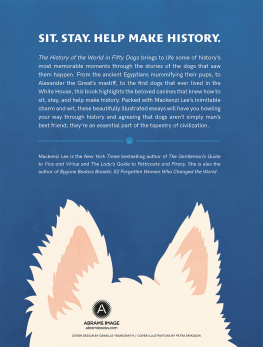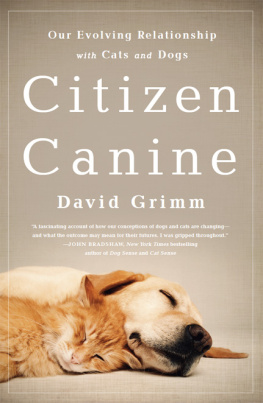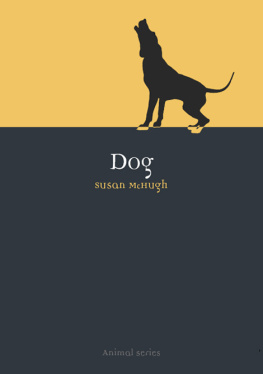RIN TIN TIN
ALSO BY SUSAN ORLEAN
Lazy Little Loafers
My Kind of Place
The Bullfighter Checks Her Makeup
The Orchid Thief
Saturday Night
Red Sox and Bluefish

First published in the United States of America in hardback in 2011 by
Simon & Schuster, an imprint of Simon & Schuster Inc.
First published in Great Britain in hardback and airport and export trade
paperback in 2012 by Atlantic Books, an imprint of Atlantic Books Ltd.
Copyright Susan Orlean, 2011
The moral right of Susan Orlean to be identified as the author of this work has been asserted by her in accordance with the Copyright, Designs and Patents Act of 1988.
All rights reserved. No part of this publication may be reproduced, stored in a retrieval system or transmitted in any form or by any means, electronic, mechanical, photocopying, recording or otherwise, without the prior permission of both the copyright owner and the above publisher of this book.
Every effort has been made to trace or contact all copyright holders. The publishers will be pleased to make good any omissions or rectify any mistakes brought to their attention at the earliest opportunity.
10 9 8 7 6 5 4 3 2 1
A CIP catalogue record for this book is available from the British Library.
Hardback ISBN: 978 1 84354 7 082
Trade Paperback ISBN: 978 0 85789 6 292
eISBN: 978 0 85789 7 213
Printed in Great Britain
Atlantic Books
An imprint of Atlantic Books Ltd
Ormond House
2627 Boswell Street
London WC1N 3JZ
www.atlantic-books.co.uk
For John and Austin, my people
and
For Molly, Cooper, and Ivy, my dogs

RIN TIN TIN

FOREVER
H e believed the dog was immortal. There will always be a Rin Tin Tin, Lee Duncan said, time and time again, to reporters, to visitors, to fan magazines, to neighbors, to family, to friends. At first this must have sounded absurdjust wishful thinking about the creature that had eased his loneliness and made him famous around the world. And yet, just as Lee believed, there has always been a Rin Tin Tin. The second Rin Tin Tin was not the talent his father was, but still, he was Rin Tin Tin, carrying on what the first dog had begun. After Rin Tin Tin Jr. there was Rin Tin Tin III, and then another Rin Tin Tin after him, and then another, and then another: there has always been another. And Rin Tin Tin has always been more than a dog. He was an idea and an ideala hero who was also a friend, a fighter who was also a caretaker, a mute genius, a companionable loner. He was one dog and many dogs, a real animal and an invented character, a pet as well as an international celebrity. He was born in 1918 and he never died.
There were low moments and setbacks when Lee did doubt himself and Rin Tin Tin. The winter of 1952 was one such point. Lee was broke. He had washed out of Hollywood and was living in the blank, baked valley east of Los Angeles, surviving on his wifes job at an orange-packing plant while Rin Tin Tin survived on free kibble Lee received through an old sponsorship arrangement with Ken-L-Ration, the dog food company. The days were long. Most afternoons Lee retreated to a little annex off his barn that he called the Memory Room, where he shuffled through old newspaper clips and yellowing photographs of Rin Tin Tins glory days, pulling the soft quilt of memoryof what really was and what he recalled and what he wished had beenover the bony edges of his life.
Twenty years earlier, the death of the first Rin Tin Tin had been so momentous that radio stations around the country interrupted programming to announce the news and then broadcast an hour-long tribute to the late, great dog. Rumors sprang up that Rin Tin Tins last moments, like his life, were something extraordinarythat he had died like a star, cradled in the pale, glamorous arms of actress Jean Harlow, who lived near Lee in Beverly Hills. But now everything was different. Even Ken-L-Ration was doubting him. Your moving picture activities have not materialized as you expected, the companys executives scolded Lee in a letter warning that they were planning to cut off his supply of free dog food. Lee was stunned. He needed the dog food, but the rejection stung even more because he believed that his dog, Rin Tin Tin III, was destined to be a star, just as his grandfather had been. Lee wrote back to the company, pleading. He said that the dog had his whole life before him and new opportunities lined up. His father and grandfather had already been celebrated around the world in silent films, talkies, radio, vaudeville, comics, and books; this new Rin Tin Tin, Lee insisted, was ready to conquer television, the coming medium, as he described it.
In truth, Lee had no contracts and no connections to the television business and doubts about its being anything more than a fad, but with the prospect of losing Ken-L-Ration hanging over him, he rushed to find a producer interested in making a television show starring Rin Tin Tin. It couldnt be just anybody, though: Lee wanted someone who he felt really understood the dog and his profound attachment to him.
The winter went by with no luck; then spring, then summer. Then one September afternoon in 1953, a stuntman who knew Lee from his Hollywood days came out to visit along with a young production manager named Herbert Bert Leonard. The stuntman knew Lee was looking for a producer, and he also knew Bert wanted a project to produce. Even so, it was an unlikely match. Lee was a Westerner, an eccentric cowboy who was comfortable only with his dogs and horses; Bert was a young, loud New Yorker who gambled, smoked cigars while playing tennis, and loved attention, but had no interest in dogs. And yet their connection was lightning, and Bert decided he wanted to make a television show starring Rin Tin Tin.
At the time, Bert was managing the production of a low-budget thriller called Slaves of Babylon; during his lunch break the next day, he wrote up his idea for a show he called The Adventures of Rin Tin Tin, starring the dog and an orphaned boy who are adopted by a U.S. Cavalry troop in Arizona in the late 1800s, during the Apache wars. As Bert recalled later, Lee went crazy for it. The story was fiction, but it captured something essential in Lees relationship to the dog, and in the dogs naturea quality of pure attachment, of bravery, of independence that was wrapped around a core of vulnerability. The show debuted three years later. It climbed in the ratings faster than any show in the history of television. Almost four decades after Lee first found Rin Tin Tin, the most famous dog in the world was born again. Lee had always been convinced that his dog was immortal. Now Bert was convinced, too. As he liked to say, Rin Tin Tin just seems to go on forever.
In the first years of the twenty-first century, Daphne Hereford hitched her 1984 Cadillac El Dorado Biarritz convertible parade car to the back of a U-Haul truck and fishtailed out of her driveway in Texas, setting off on an eleven-month tour of the United States with three of her German shepherds: Gayle, Joanne, and Rin Tin Tin VIII, whose registered name was Rin Tin Tins Oooh-Ahhh but whom she generally referred to as the Old Man. Gayle was pregnant and needed attention and Joanne was good company; the Old Man, though, was the big ticket. Daphne never went anywhere without the Old Man. At home, the other dogs spent most of their time in their kennels in the backyard; only the Old Man had house privileges. She planned to have him taxidermied when he died so she could always have him around.














